7 Mitel MiVoice Business alternatives that won’t break the bank

Project Specialist

Share
Looking at business phone systems, but not sold on Mitel MiVoice Business yet?
You’re in the right place. In this breakdown, we’ll look at some of the top Mitel MiVoice Business alternatives when it comes to overall business communications. We’ll look at different cloud phone systems and cloud communications providers that give you not only VoIP calling, but also team chat, video calling, and even contact center functionality.
Below you’ll find a shortlist below of some of the best cloud communications platforms that could be a better option than Mitel—and many are at small business-friendly prices too.
Let’s take a look at these top Mitel alternatives.
What is Mitel MiVoice Business?
Mitel falls under the category of a “legacy” enterprise unified communications hardware and software. It has a rich history in the business dating all the way back to the 1970s when it made its name providing on-premises PBX phone systems, including landline phone service, desk phones and handsets, and also on-premises call center hardware and services.
Over the years, Mitel has made moves to enter the cloud PBX and hosted call center space. In 2013, they acquired a contact center company called prairieFyre, which is still the basis for their contact center solution today.
In 2017, they announced the acquisition of another traditional provider of on-premises and cloud-based PBX solutions, ShoreTel, with the goal of absorbing ShoreTel’s cloud-based functionality—which they quickly renamed MiCloud Connect (although existing ShoreTel customers still used these services under the old name).
But Mitel then announced that they’ll no longer sell the MiCloud Connect product as of 2022. In mid-June 2024, RingCentral acquired MiCloud Connect, including its products, intellectual property, and customer base.
Today, Mitel offers Mitel MiVoice Business as their business communications solution.
Why businesses might look for a Mitel MiVoice Business alternative
You have an aggressive digital transformation strategy
According to IDG, a whopping 89% of companies have already adopted a digital-first business strategy or have plans to do so. This means moving to a softphone or mobile app instead of a desk phone, and using cloud-based applications like Salesforce, Google Workspace, or Microsoft 365.
If at this stage in the game, you still haven’t migrated your business phone system to the cloud and integrated it into the cloud apps your team is already using, then you’re a bit behind the ball on your digital transformation strategy—and Mitel won’t get you there.
Maintaining your phone system has gotten too expensive
For many Mitel users, they have a piece of hardware or server rack in their company phone closet called a PBX (Private Branch Exchange), which is connected via Ethernet cable or landline to the desk phones in their office. But this antiquated way of delivering voice services doesn’t really cut it in today’s business environment.
Phone systems like Mitel are a capital expenditure in IT budgets. This means there’s a large rollout cost for hardware, installation or Professional Services, telephony infrastructure and desk phones. Upgrades to on-premises systems tend to come every few years and can be costly to purchase and implement, with many companies putting off upgrades for years and using outdated software.
If you’re thinking of your phone system as a business expense rather than a revenue generator (which it 100% can be), then it might be time to look at a cloud-based or business VoIP service solution.
💡 What’s VoIP?
VoIP stands for Voice over Internet Protocol, which is essentially a type of telephony technology that lets you make phone calls through the internet instead of using landlines or phone lines.
On a related note, good business phone systems don’t just do phone calls anymore—today, most businesses have moved (or are moving) toward cloud-based communications platforms that give you messaging, video conferencing, and even contact center functionality in addition to phone calls. Like Dialpad, for instance, which gives you all of that in a single intuitively designed app:
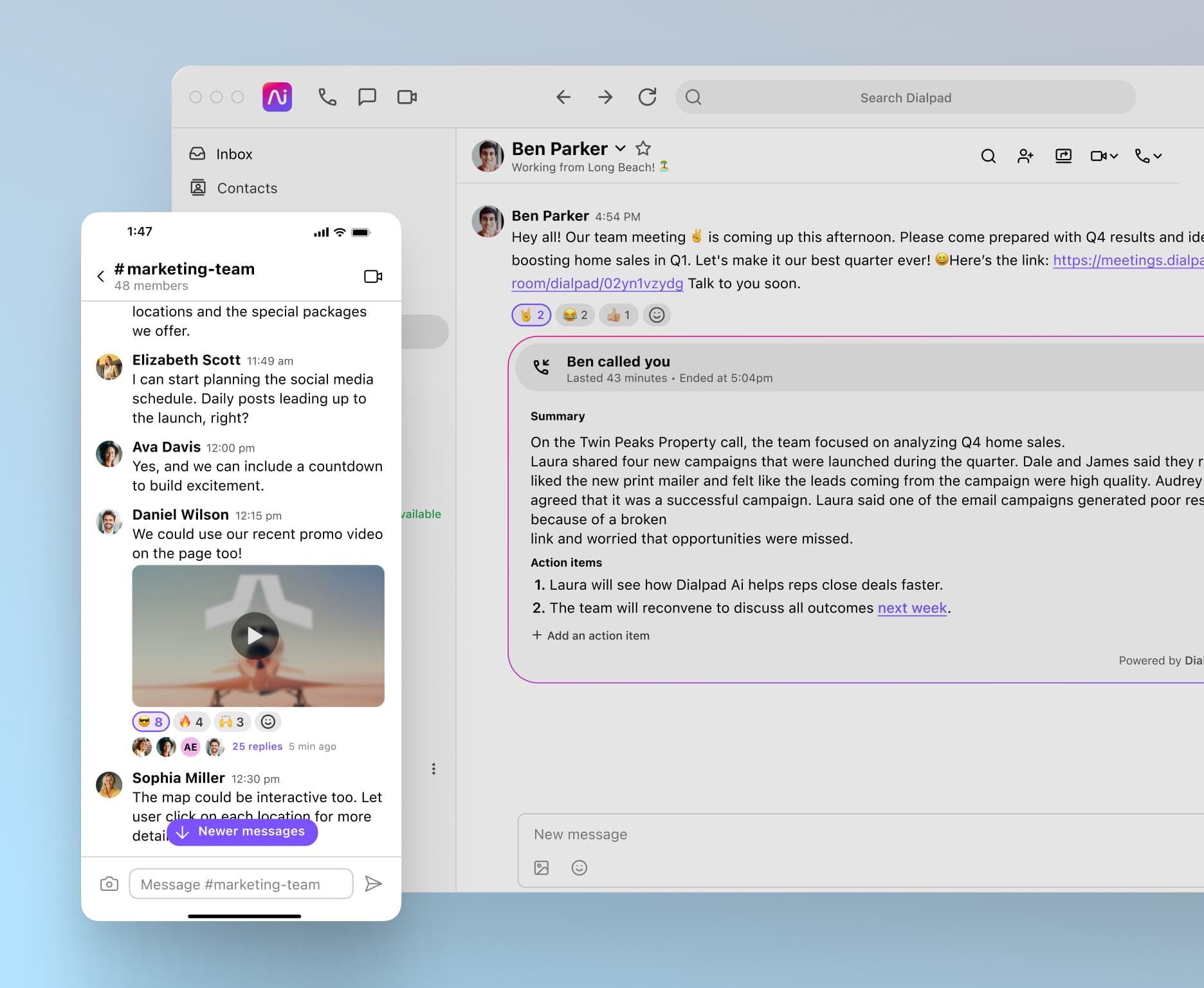
In fact, it’s hard to figure out pricing at all based on Mitel’s website.

You need a fully integrated contact center platform
Even if you don’t think your company needs contact center software, nearly every company takes inbound or makes outbound calls on a daily basis and could benefit from an ACD (automatic call distributor), IVR (interactive voice response) or call routing solution (which a contact center solution can give you).
And when you do explore contact center software, it's critical that it is cloud-based—and ideally the provider has their CCaaS (contact center as-a-service) functionality on the same platform as the rest of their communications functions, such as calling, messaging, video calls, and analytics.
If you’re using a third party for contact center software without this unified platform (like many companies do), the disadvantage is that your internal calling or messaging features exist in one data store or data lake, while your external contact center functionality is separate.
That means that a customer support team, for example, can’t easily take a customer call (external communications) and message their supervisor (internal communications) with a question in the same place.
What’s unique about the way we built Dialpad is that we designed the experience to be truly unified—you can handle all those external and internal communications in one app:

Your on-prem technology isn’t improving with the times
And finally, many of our customers who come from Mitel do so because they’ve found that legacy systems have been left behind in terms of technology like cloud contact center and Ai functionality. Mitel is a prime example—rather than invest in R&D to modernize their legacy phone system and cloud-based platform, they chose to help migrate their own (!) on-prem customers to another provider instead.
The 7 best Mitel MiVoice Business alternatives, ranked
To compare the top Mitel alternatives, we considered and ranked these from the options with the most robust UCaaS (Unified Communications as a Service) functionality all the way down to the more bare-bones options.
Fun fact: The pricing is actually very comparable even when you compare the top and bottom options.
1. Dialpad: A truly unified communications platform with robust functionality and industry-leading Ai

Dialpad is a leading cloud communications solution that gives you phone calls, video calling, instant and SMS/MMS text messaging, and also an integrated contact center platform—all in one place.
What makes Dialpad Connect a good Mitel alternative?
One of Mitel’s weaknesses that we mentioned earlier is its lack of innovation when it comes to the cloud and evolving past its legacy on-premises foundation.
Dialpad is entirely on the other end of the spectrum in this regard, because it was “born in the cloud.” Out of all the major leaders in cloud communications (some of which are on this list below), Dialpad is the only one that was created in the post-iPhone era.
That means that its cloud and telephony infrastructure are much more modern and flexible—and is a big reason why Dialpad can provide HD call quality around the world and even guarantee 100% uptime (not 99.99 or 99.999%) for its Enterprise plan customers.
What you get with Dialpad that you don’t get with Mitel
Incredible ease of use
One of the advantages of being a more modern solution is that Dialpad is designed to be easy to use—and its technology can actually support that. Often, software providers want their products to be easy to use (who wants to create something that users hate using?), but their technology makes it difficult for them to provide that experience.
With Dialpad, you can onboard your whole team in minutes and easily add—and remove—users, manage phone numbers, and more, all with just a few clicks from your online dashboard:

Truly unified communications
With Dialpad, you have all your collaboration tools, from team messaging to SMS texting, to phone calls and video conferencing, all in one app.
There’s even a neat Discord-esque feature we call the Sidebar, where you can hop into a quick audio chat with a teammate from a messaging thread instead of having a formal meeting:
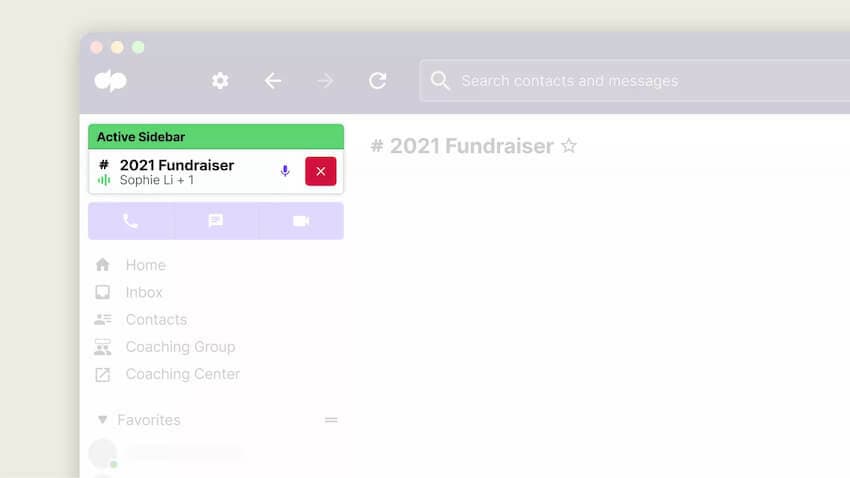
And if you have a support team or sales team that manages high volumes of communications, Dialpad Support Contact Center is fully integrated—not whitelabled or a third-party add-on.
From here, you can build chatbot responses for your website, manage social media messages, and more:
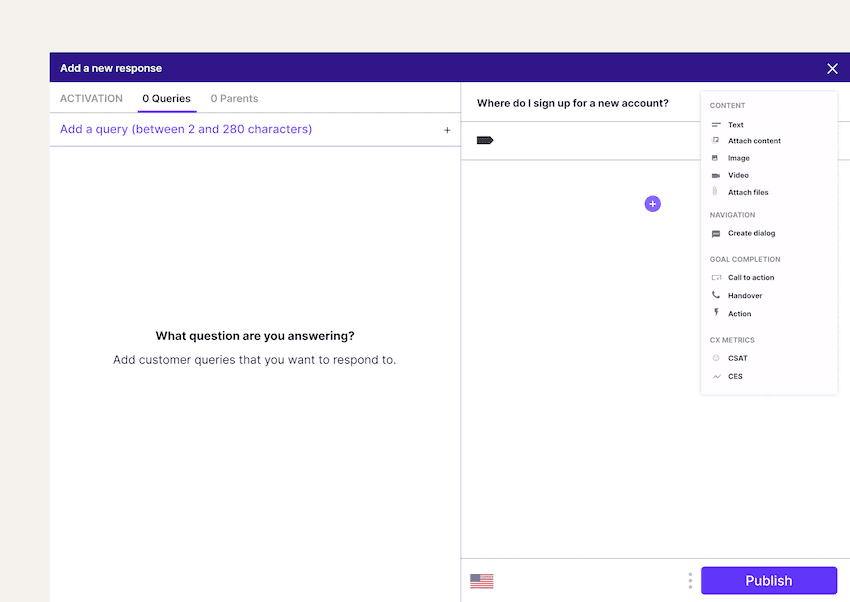
Industry-leading Ai
Possibly the most unique thing about Dialpad is its artificial intelligence, Dialpad Ai, which transcribes calls and video meetings in real time. And after the meeting, it’ll send attendees an Ai Recap including a call summary with the transcript, recording, and even action items! Dialpad also does voicemail transcription. If you’re in back-to-back meetings and don’t have time to listen to your voicemail, no problem—it can transcribe that for you, again, in real time so you can see what your caller wants to talk to you about (and if it’s urgent):
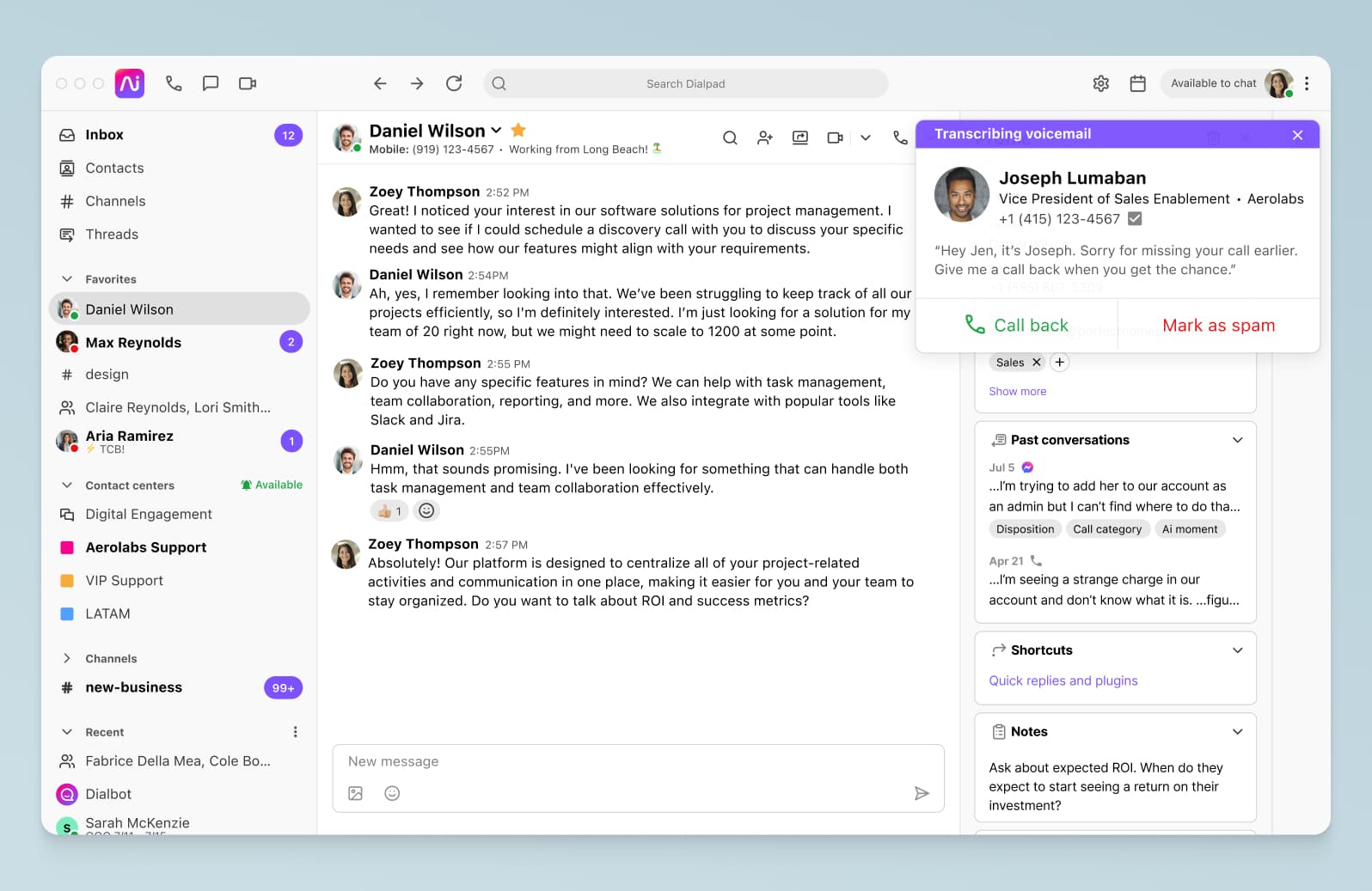
The real power of Dialpad Ai extends to the contact center platform too. Beyond transcriptions, it can also do live sentiment analysis so that supervisors can quickly see if a call is going south and if they need to jump in to help an agent:
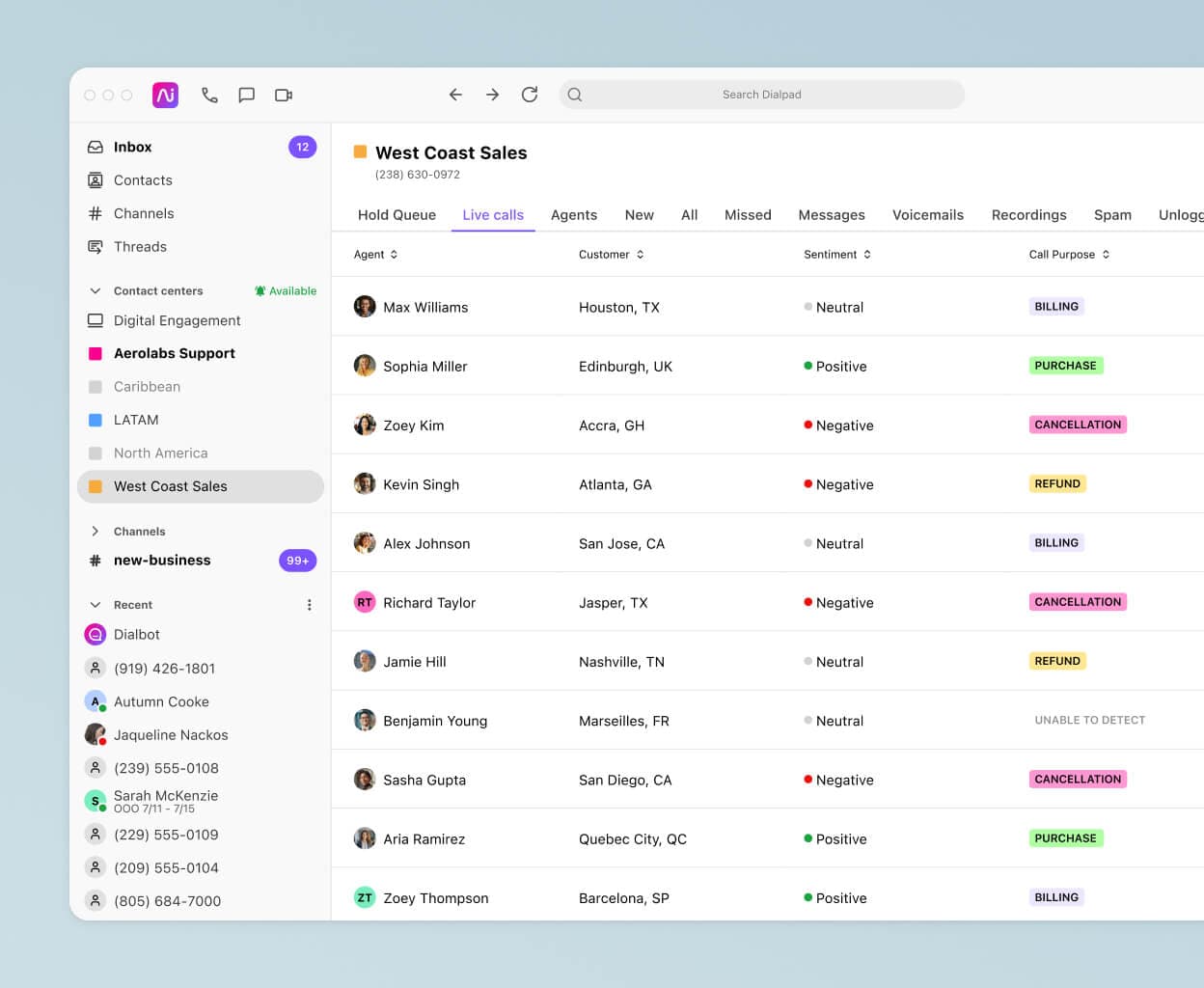
They can also create Real-Time Assist (RTA) cards with tailored notes on specific topics. For example, if agents get lots of questions on pricing, they can create an RTA card with notes on pricing plans and set it to trigger when “price” or “pricing” is spoken on a customer call:
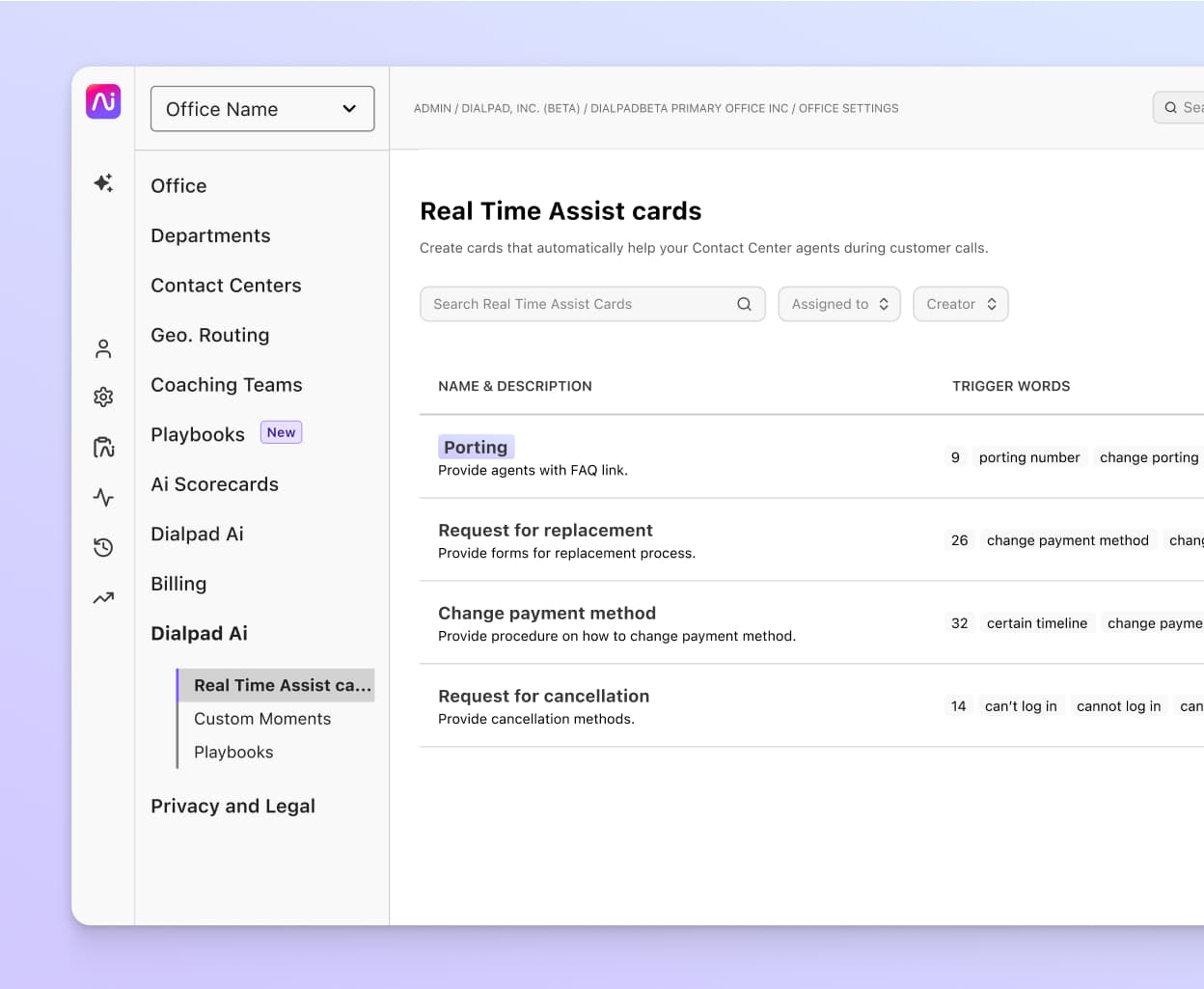
Works on any device
Dialpad’s desktop and mobile app works across PC, Mac, Android, and iPhone. You can also switch devices while on a call, how cool is that?
Oh, and it’s fully browser-based too, meaning you can log in on a web browser without downloading any apps to use it.
This tends to come in handy for sales teams who want to invite prospects or customers to video meetings, since those folks don’t always want to download a software package or app just to join your video conference:

Pricing:
What you get with Dialpad’s least expensive plan at $15 per month per user:
A local phone number
Unlimited calling in the US, Canada, and your country
SMS/MMS messaging
Unlimited video meetings with features like custom virtual backgrounds, virtual waiting rooms, and real-time transcriptions
Call management features like routing, auto attendant, call transfer, and more
A wide range of integrations with software including Google Workspace and Microsoft 365
With higher tiers (starting at $25 per month), you unlock:
APIs and Webhooks for developing your own custom apps with Dialpad’s features
Advanced integrations with Salesforce, HubSpot, Zendesk and more
International SMS messaging
100% uptime SLA (for Enterprise plan customers)
And finally, here's what real customers think of Dialpad:

Compared to what users think of Mitel:

Try the best Mitel alternative for free
Sign up for a free 14-day trial to take Dialpad for a spin. Or, take a self-guided interactive tour to play around with the app on your own first!
2. RingEX
RingCentral offers a communications solution that includes enterprise VoIP, video, SMS and team chat. Like Mitel, it’s been around for decades and is considered a legacy provider. RingCentral is actually the partner that acquired MiCloud Connect.
What makes RingEX a good Mitel alternative?
Well, Mitel chose them to sell a chunk of their business to, and RingCentral does have a somewhat unified solution.
Unlike Mitel, RingCentral has made more progress in evolving its communications platform to the cloud, although their legacy infrastructure still impacts things like ease of use and scalability. Dialpad, for instance, lets you add hundreds and even thousands of new users relatively quickly and easily compared to pretty much every other provider on this list.
Equally importantly, RingCentral’s lowest plan is more expensive. Learn more about the best RingCentral alternatives.
Pricing for RingEX:
Core: $20 per user per month (regular price); Advanced: $25 per user per month (regular price); Ultra: $35 per user per month (regular price)1
🤿 Deep dive:
Get a breakdown of Dialpad vs RingCentral here.
3. Cisco Webex
Cisco Webex is another communications provider that’s been around for many years and has evolved its product to include unified communications.
Cisco is generally seen as an enterprise communications leader, but if you want to be able to do conference calling with people outside your company, you'll need to bring your own carrier or add on a phone plan—which costs extra on top of their standard plans. (In contrast to Dialpad, which has the telephony piece built right in.)
Essentially, it comes with video conferencing, but the phone call channel is an added cost.
What makes Cisco Webex a good Mitel alternative?
It’s definitely a more mature product than Mitel and does come with more robust functionality.
Pricing:
The “Call” paid plans start at $15.30 per user per month.2 If you want to “Meet + Call,” then the Suite plans start at $22.50 per license per month. (Compare with Dialpad, which starts at only $15 per user per month, and comes with unlimited calling and video conferencing.)
📚 Further reading:
Learn more about the best Webex alternatives.
4. Zoom Phone
Best known as a video conferencing platform, Zoom has recently added telephony features and started marketing a unified communications product called Zoom Phone, which says it comes with “phone” functionality, but it’s laid out in a confusing way on their pricing page. (More on that in just a bit.)
What makes Zoom One a good Mitel alternative?
Zoom is actually quite strong in terms of its cloud infrastructure as it’s a newer product compared with more legacy providers like RingCentral and Cisco, so in terms of flexibility and mobility, Zoom has the edge over Mitel. If you're interested in other options that can give you unified communications instead of just video conferencing, you can learn more about the best Zoom Phone alternatives here.
Pricing:
If you need phone calls, then you need to move to the Zoom Phone tab, that has phone only options starting at $10 per user per month with metered calling or $15 with unlimited domestic calling. If you need a full Business Communications solution, then you’ll need Zoom Workplace + Phone, starting at $18.32.3
🤿 Deep dive:
Get a closer look at Dialpad vs Zoom.
5. Nextiva
Nextiva is another VoIP “unified communications” provider that has phone calls, video calling, and messaging functionality. They’ve been around for quite some time and are generally well regarded.
If you’re looking for both a UCaaS and CCaaS solution, then you’re likely going to have to deal with a different user interface and different logins for those two solutions. (Unlike with a provider like Dialpad, for instance, which is fully built in-house and has one consistent user experience.)
What makes Nextiva a good Mitel alternative?
Nextiva is a bit better than Mitel in that you’re getting a decent set of functionality in comparison to Mitel’s, which is a bit cobbled together and packaged in a confusing way. However, it has the same disadvantage in terms of Ai innovation: it’s a bit behind other solutions like Dialpad’s, which are trained on proprietary Ai. (Learn more about the best Nextiva alternatives.)
Pricing:
Nextiva’s most basic plan that includes calling starts at $30 per user per month at regular price and comes with a local phone number.5 Their cheapest plan included digital channels only.
🤿 Deep dive:
Learn more about Dialpad vs Nextiva in this one-on-one breakdown.
6. Vonage Unified Communications
Vonage is a more basic VoIP phone system that has been around for a while and is pretty well known, in part because it has a big residential side of the business. If you’re running a very small business or only need a phone number or calling, Vonage can be a decent business phone system. (More on the best Vonage alternatives here.)
What makes Vonage Unified Communications a good Mitel alternative?
This is actually a close one, as the pricing is comparable, and Vonage does offer unified communications features like team messaging (which you get on the basic plan) and CRM integrations (which you have to go up to the more expensive plans for).
One thing to note is that Vonage says you get free calling included in the basic plan—but that “reasonable and acceptable usage applies for unlimited calls.” What does “reasonable and acceptable usage” actually mean? Anyone’s guess.
Pricing:
Prices start at $13.99 monthly per user, and really only gives you calling and SMS (no team messaging or meetings!).6 Learn more about how Vonage compares to Dialpad.
👉 Side note:
There are other VoIP phone systems out there like OpenPhone and Grasshopper as well, but we chose to keep this list of alternatives to more unified communications-focused providers—that is, solutions that come with phone calls, video conferencing, team messaging, and SMS/MMS messaging at a minimum. That’s why you don’t see them on this list. (Neither OpenPhone nor Grasshopper has video conferencing or contact center functionality.)
7. Ooma Office
Ooma Office is a virtual phone system that’s marketed toward small businesses. It’s actually quite similar to Vonage in that it also has a home / residential phone service side to the business.
What makes Ooma Office a good Mitel alternative?
Ooma is a relatively reputable communications provider, and does come with video conferencing and messaging—even if it’s very expensive compared to the other options on this list. That being said, there’s a reason why it’s at the bottom of this list, and if you can, you should look at the other Mitel alternatives first if you want a more complete and sophisticated platform.
Pricing:
The most basic pricing plan, Ooma Office, runs at $19.95 per user per month.7 That’s similar to other options on this list like RingCentral, but quite a bit more than Dialpad, which starts at only $15 per user per month—and comes with a much more complete functionality.
🤿 Deep dive:
What’s the best Mitel alternative for your business?
If you’re looking for a communications platform that isn’t Mitel, the good news is you have lots of options out there. Regardless of whether you’ve made up your mind at this point, the best thing to do is to sign up for a few free trials and get some sales demos.
This way, you can really get a sense of the intangibles like how easy this software is to use and set up, what the onboarding experience is like—and whether Dialpad is a top contender here.
Speaking of which, why not try Dialpad for free?
Try the best alternative to Mitel
Sign up for a free 14-day trial of Dialpad to try it now! It takes just a few minutes, and you'll be set up with a virtual business number too. Or, take a self-guided interactive tour to play around with the app on your own first!
1ringcentral.com/office/plansandpricing.html
2pricing.webex.com
3zoom.us/pricing
4talkingpointz.com/nextiva-competing-around-the-customer-experience/
5nextiva.com/nextiva-pricing
6vonage.com/unified-communications/pricing/
7ooma.com/small-business-phone-systems/plans/








